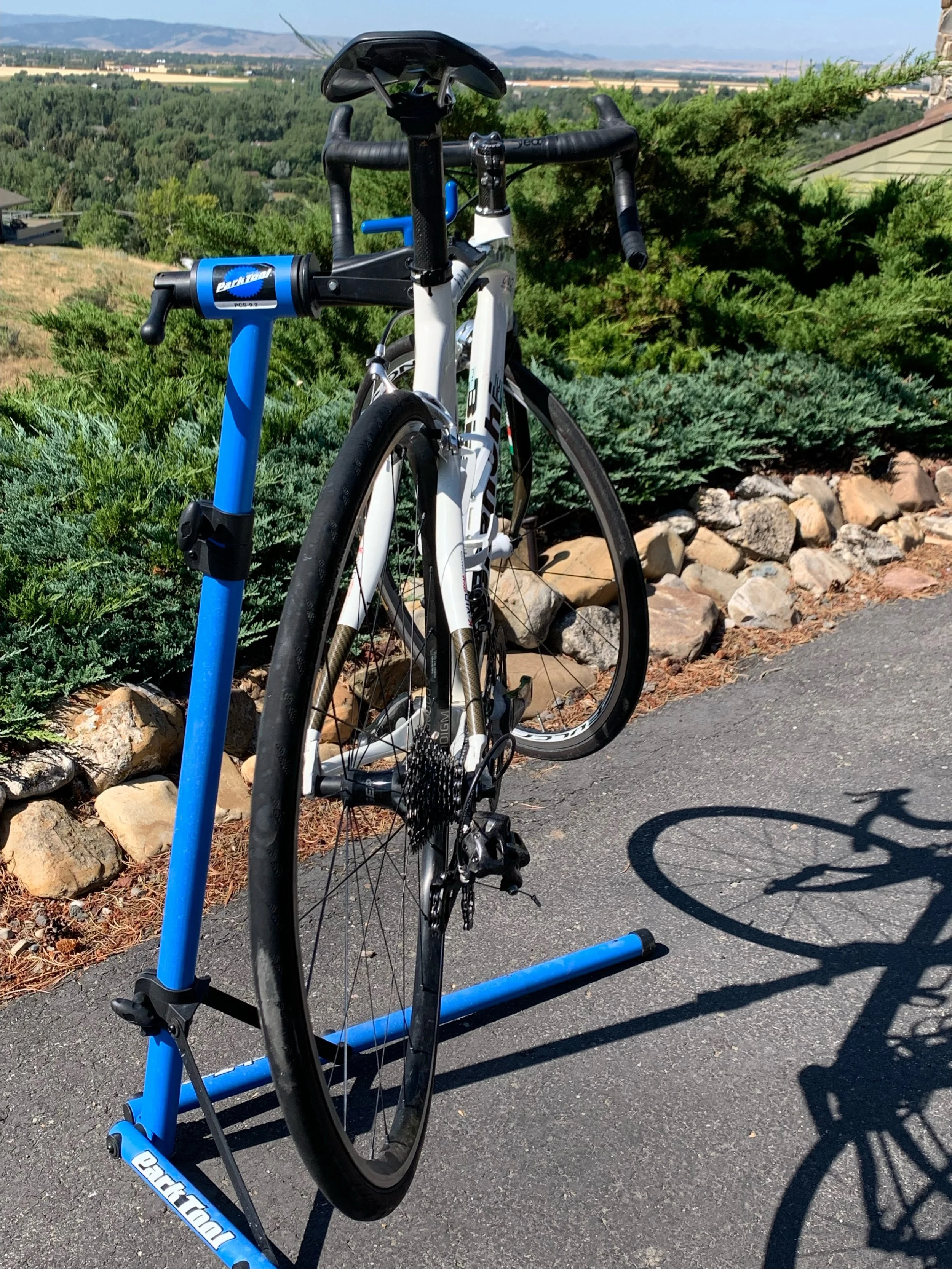As we move into Fall, it’s worth a few minutes to take a fresh and objective look at personal habits when driving or using some form of active transportation including walking, rolling, or biking. Here’s an example:
The bike pictured is the result of a pickup broadsiding a bicyclist on a two lane rural road earlier this summer. The driver was on the way to town, watching for vehicle traffic, but blind to the cyclist directly in front! The truck pulled out from a stop sign and into the rider. Although the carbon bike was totaled and physical injuries to the rider were relatively minor, this accident could have had much more serious consequences.
How many times have you been surprised by a cyclist, runner, walker, or car?
An informal survey of bike shops in Bozeman following the accident showed multiple bikes in for repair as a result of mishaps with motorized vehicles. Fault for the accidents varied between vehicle drivers and bike riders. This isn’t an epidemic, but does highlight the need to remind ourselves of the safety and risk aspects of active transportation, as well as driving habits for those operating motor vehicles.
During the next few weeks, colleges are back in session, K-12 students are returning to school, and tourists are generally finishing vacations. Not to mention farmers harvesting crops and moving equipment on roads, and everyone’s favorite, road construction and repair still in full swing! Safety may not be the main focus of those using any mode of transportation.
Here are a few thoughts for consideration:
· With experience, all of us develop confidence and expectations for dealing with transportation situations. Unfortunately, when expectations and reality differ, accidents happen! Reference the mishap above, since the driver’s expectation did not include a bicyclist, he did not “see” the rider until it was too late! These “blind spots” can occur anywhere and we all have them! Here’s an idea: objectively evaluate your own driving, biking, or walking habits. What blind spots have you created for yourself? Are you making too many assumptions?
· One frequent assumption is that vehicle drivers can see bicyclists or pedestrians and will stop. How many times has that assumption been wrong? Pedestrians and cyclists, stay aware of your surroundings and assess the risk. Are you stepping out from parked cars and into traffic? Is it getting dark and you are wearing dark clothes or riding without a light? Does traffic have time to stop when you step out? Vehicle drivers, where are your “blind spots?”
· Pedestrians and cyclists, make the assumption that traffic does not see you! Eye contact between all parties helps! Be clear on what you intend to do: cross the street, stop, turn, or chat on the corner, and give motorized vehicles time to react! Wait until they slow, stop, or wave you on before moving out. Have and use lights and hand signals, and always wear a helmet when riding a bike.
There’s nothing “new” in these comments, just a reminder that accidents happen for a variety of reasons. Being aware and focused on potential risk will help in prevention. Being the cause or the victim of an accident can be life changing in many ways, and not in a positive way!


